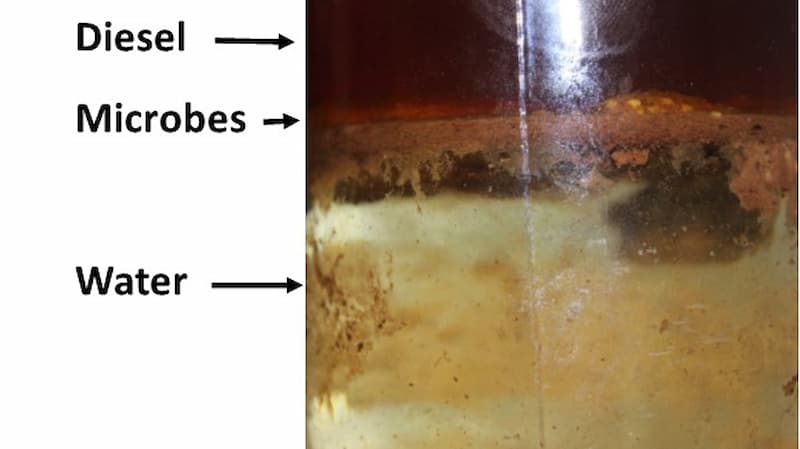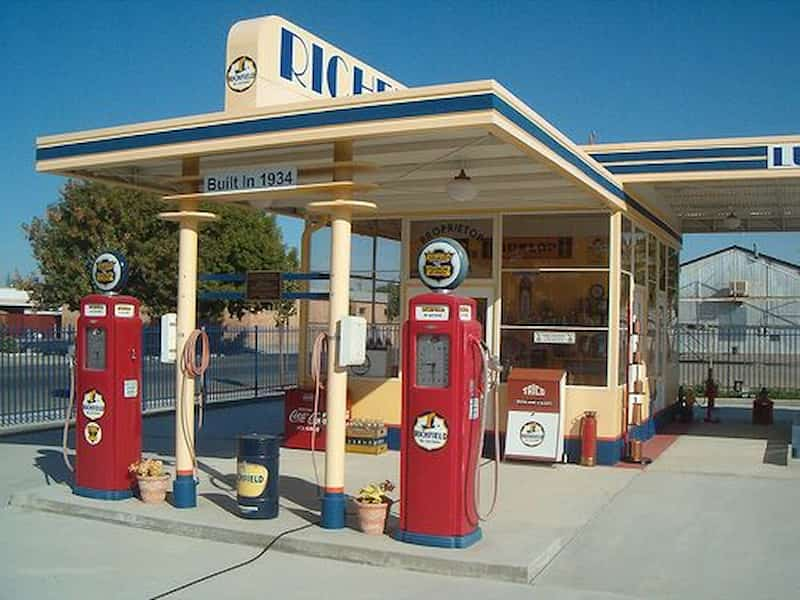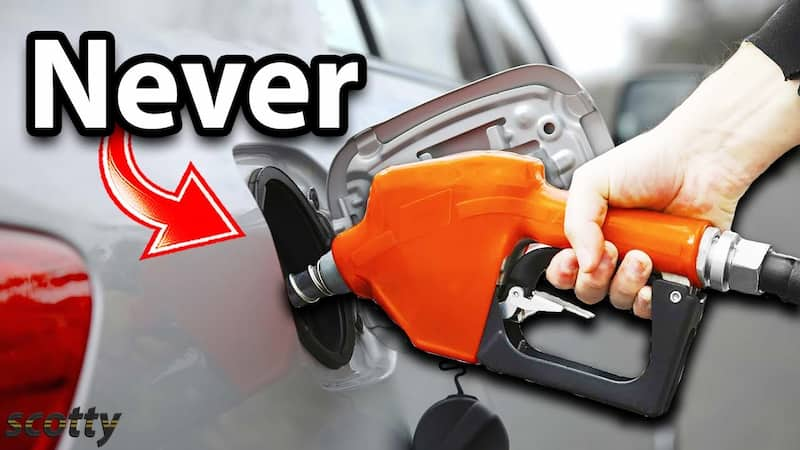Sadly, only a few people care about the gasoline quality they put inside their vehicles. This subjectivity will also lead to some problems, most of which are minor. However, if this situation continues to happen, the consequences will be enormous in the future.
Testing for lousy gasoline is crucial to prevent costly repairs and keep your vehicle running smoothly. This article will guide you through how to test for bad gasoline and help you determine if it’s time to drain your tank.

About Bad Gasoline
Like many other chemicals, gasoline will also degrade over time or when exposed to a lot of impurities in both liquid and solid form. Therefore, this fuel does not possess high stability as many people think.
This conformational change process will often significantly affect the compound’s ignition ability and reaction temperature. It was causing a deviation in the combustion efficiency or the working mechanism inside the system.
Unfortunately, the gasoline degradation result will often not be as apparent as in lubricants or coolants. Only when we reach a certain level can we feel the change that this problem brings. Because of this, it is difficult to determine if you have used lousy gasoline or not.
In many cases, drivers ignore the signs and continue moving with vehicles filled with poor-quality gasoline. Since then, their cars gradually lose their durability and ability to operate stably.
What Causes Gas To Go Bad?
There are three leading causes for the gasoline base situation: time, water, and other factors, respectively. Identifying the factors affecting fuel makes it easier to take preventive measures.

Old Gas
Gasoline is very sensitive to the external environment, so prolonged exposure to air will cause severe damage to this liquid.
The first time you open the tank’s lid, the reactions between the fuel with oxygen and other substances will immediately occur. And the ideal time for us to use it without worrying about this factor is 30 days.
After the above time, the oxidation process will occur more firmly until the gasoline separates. You will observe that part of the solution rises to the top like grease while the rest thickens. Gasoline will no longer be usable.
The maximum time for undenatured gasoline can be up to 6 months, depending on additives to help harmful gas added to fuel. Here is a timeline for the two most popular gasoline models on the market for your reference
- Pure unadulterated gasoline: The purity in the composition helps this liquid maintain high stability within 3 to 6 months.
- Ethanol blended gasoline: Ethanol is quite volatile, and the effect on the design of this fuel will only last for two to three months after exposure to the air.

Water
Suppose you’ve just traveled through flooded areas. In that case, many experts will recommend replacing fuel, lube, and oil as soon as possible because all three substances will immediately lose their ability to work if they become washy. In particular, gasoline is the liquid that suffers the most damage caused by water.
It is inherently an explosive mixture, but gasoline will no longer maintain this ability if we add water to the component. Even if you try adding more dirty fuel to increase performance, the problem will not disappear because quantity cannot compensate for quality.
Excess water will also cause chemical evaporation. And this is the reason why the spark plugs cannot work and the details inside the combustion chamber rust faster.
To avoid the above damage, you need to test for water in gasoline as soon as possible.
Another reason
If the tank cap is not closed tightly or the protective layers inside this mechanism are peeling, external agents will easily penetrate the gasoline. These impurities will cause many problems for you when operating the car.
In addition, the fuel’s properties are also one factor that causes bad gasoline. Because if there is an error in the fuel production process, the compositional factors will quickly become wrong, affecting the performance.
Can Bad Gasoline Damage Your Car?
Problems with fuel always cause a lot of problems for your vehicle. However, this process is relatively long instead of happening immediately, like many other failures. So many people mistakenly believe that the quality of gasoline will not cause any adverse effects on the car.
Although the impact is small in the beginning, the long-term consequences of lousy gasoline are dire. In many cases, you will have to perform a general or general cleaning to treat the residues inside. Worse, the vehicle will no longer be operable.
However, the above problems are not the most worrying. Some reports show that poor-quality gasoline can cause severe fires and explosions in many models of vehicles.

How To Test For Bad Gasonline In Car – Bad Fuel Symptoms
It is easier to check the quality of gasoline with a chemist or specialized equipment. But there are still some easier ways to do it that you can refer to. Observing the 5 signs below is the easiest method to implement.
Problems With Acceleration
Suppose you realize that your vehicle is experiencing acceleration problems, especially during the start-up phase. In that case, you need to have the fuel tank checked immediately because this is the clearest sign that bad gasoline causes.
Because if the composition of gasoline is not stable, the ability to burn and work will also decrease significantly. But these two factors play a decisive role in the acceleration performance of the car engine. So we will immediately have the feeling that the system is weaker.
To maintain acceleration, you need to find a way to solve it early to avoid adverse effects later on
Unusual Changes In Speed
Many damages can affect vehicle speed, and bad gasoline is one of them. The cause of this phenomenon is similar to the problem with acceleration when gasoline loses its inherent efficiency.
Insufficient work capacity will result in the piston rotating more slowly and transferring less force to the rotating shafts. From there, the vehicle suddenly slowed down unexpectedly.
In another aspect, the car will no longer be able to accelerate quickly. Therefore, even when fully pedaling, we see little change in performance.
Fuel Filter Damaged
In addition to causing performance problems, bad gasoline also introduces severe failures in the system’s internal mechanisms. The fuel injector parts, such as the filtering mechanism, are the most common.
So if you find that the fuel suddenly loses more or does not provide enough for the operation, do not consider the fuel quality.
In this case, lousy gasoline will often create a build-up and interfere with fuel filtration. After a long time, this residue layer will stick enough and cause negative phenomena.
Engine Shutting Down
One of the most severe mistakes bad gasoline can cause is to stop the engine completely. The effect of fuel on this aspect is many, and it is challenging to know the leading cause.
If you use delaminated fuel, the engine will not work. Gasoline that is too thin is also a common cause of cars not having enough energy to operate. Even accumulation can be the main reason in this case.

How To Test For Bad Gasoline Kept In Storage?
Fortunately, we can check the amount of gasoline in the warehouse is still of good quality or not just by observing with the naked eye.
- First, you must remember that gasoline can still be used if delamination has yet to occur. So let’s start by opening the lid and looking at the top surface. If there is no oil board or a mirror-like reflection appears, it indicates that the fuel is still sufficiently stable.
- Next, we will need to observe the color of the fuel. If the color is no longer clear as usual but tends to be darker, it is best to throw the gas tank away.
- Alternatively, you can pour the liquid into a transparent container and compare it with the new solution. The difference between light and dark will be an accurate measure to evaluate fuel stability
- If you smell sour, it is also a sign that the gasoline is no longer usable.
What Are The Symptoms Of Water In Your Gas Tank?
Through the car’s performance, you can guess whether there is water in the fuel tank. However, there is still a way to do it, as in the diesel fuel test by the naked eye.
Compared to regular gasoline, the water mixture often has a much lighter color. Through ordinary observations, you can easily see this difference. Besides, an abnormal increase in fuel volume is also a common sign of this phenomenon.
FAQs
Is there a way to test gasoline quality?
Anti-knock rating (AKI) and octane rating are the two most reputable ratings you can use to rate gasoline or some other fuel. Please base on these scales instead of using senses to get the most appropriate answer.
Is 4-year-old gasoline still good?
In most cases, a 4-year-old tank of gas will no longer be usable. There will still be some exceptions, but this percentage is meager.
Can I mix old gas with new gas?
You can mix old and new gasoline, but I advise that this action will only bring more problems. So you need to drain the old fluid if you want to add further fuel.
Can old gasoline be revived?
You can only stabilize and help the old gasoline perform better. There are still no chemicals that can restore or turn a solution that has been used for a while back to like new.
Will old gas clog fuel injectors?
Old gasoline can be one of the causes of clogged fuel needles. So you will rarely have the same problem if you regularly change the fuel amount.
Conclusion
And the above is all you need to know to answer how to test for lousy gasoline. Our car will certainly have problems with lousy gasoline if we do not know how to intervene and prevent it properly.
So make good use of the information contained in today’s article.
